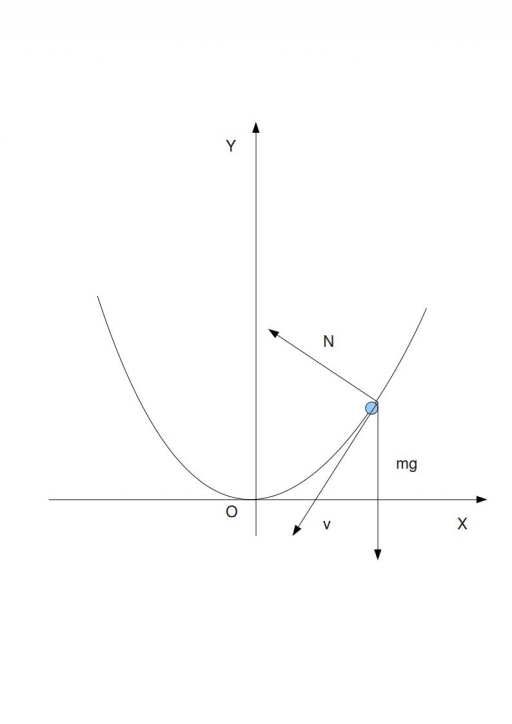This is problem 1.18 from JS (M821 course book). The question is to investigate the motion of a bead that slides on a smooth parabolic wire rotating with constant angular velocity about a vertical axis. is the distance from the axis of rotation.
To simplyfy the calculations we can choose the scale so that equation of the parabola is .
Yes, I know as a grown up man I should write out the expression of the kinetic energy:
where is the tangential velocity of the bead directed along the wire. Then define potential energy as usual:
bearing in mind that the force of gravity acts in the direction opposite to that of axis, hence changing the sign.
Construct the Lagrangian:
Define the action:
Use variational principle
to obtain the Euler-Lagrange equation:
Calculating separate terms:
Finally obtain the equation of motion:
However, I am tempted to use an alternative method that I learned on my secondary school physics lessons. It is based on the direct application of Newtons laws and projecting vector equation on coordinate axes. Writing out the second law we have to bear in mind that the bead is acted upon by gravitational force and the force of normal reaction which arises due to Newton's third law and acts along the normal to the wire.

Hence Newton's second law is expressed as follows:
Acceleration is split into the tangential and centripetal parts:
Projecting the equation on the vertcal axis we obtain:
where is the angle at which the tangent crosses the horizontal axis (hence )
Then project on the horizontal axis:
Eliminate :
Now calculate the tangential acceleration:
and the centripetal part:
Plug the above results into the equation:
to obtain the same result
Further analysis on the phase plane shows that when the wire rotates not very fast () the bead oscillates around the origin in the vertical plane. If the bead is moving along the wire away from the origin, it's velocity tending asymptotically to value
Comments
New comment
Wah?